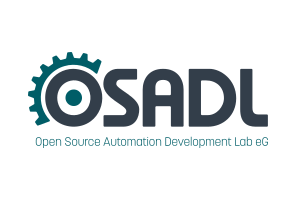Dates and Events:
|
OSADL Articles:
2023-11-12 12:00
Open Source License Obligations Checklists even better nowImport the checklists to other tools, create context diffs and merged lists
2022-07-11 12:00
Call for participation in phase #4 of Open Source OPC UA open62541 support projectLetter of Intent fulfills wish list from recent survey
2022-01-13 12:00
Phase #3 of OSADL project on OPC UA PubSub over TSN successfully completedAnother important milestone on the way to interoperable Open Source real-time Ethernet has been reached
2021-02-09 12:00
Open Source OPC UA PubSub over TSN project phase #3 launchedLetter of Intent with call for participation is now available |
Real Time Linux Workshops
1999 - 2000 - 2001 - 2002 - 2003 - 2004 - 2005 - 2006 - 2007 - 2008 - 2009 - 2010
Eighth Real-Time Linux Workshop on October 12 to 15, 2006, in Lanzhou, Gansu, P.R.China
Porting XtratuM to PowerPC
Zhou Rui, Bai Shuwei, Nicholas McGuire, and Li LianDistributed and Embedded System Lab
School of Information Science and Engineering
Lanzhou University, P. R. China
zhour04ªst.lzu.edu.cn
As a new nanokernel, XtratuM is developed in the framework of the OCERA project for executing several operating systems, with the ability to support real-time operating systems, in the same hardware but running in separate address spaces (temporal and spatial partitioning). XtratuM is a thin virtualization layer or software abstraction virtualizing the essential resources (interrupt, timer, memory, and CPU). To run a kernel, basically the timers, interrupts and address space must be provided. To date XtratuM has been implemented on x86 architecture with support for some versions of Linux kernels, such as 2.4.27 and 2.4.28 - which also are able to run RTLinux/GPL as one rt-domain. Regarding other processor architectures - porting XtratuM to ARM is in process. In this paper, we mainly focus on our work of porting XtratuM to PowerPC based on initial investigation of XtratuM and PowerPC architecture. According to the mechanism of XtratuM to get hardware timer, at present, we've implemented the same function on PowerPC. Then we will discuss about our working process here. Our porting XtratuM to PowerPC will help to expand the applicable area of this free-software nanokernel, which will also promote embedded and real-time applicable abilities based on PowerPC, e. g. the simultaneously running real-time operating systems can sufficiently make use of the powerful and stable performance of PowerPC to guarantee the quality of all these systems. Further more, due to the different performance requirements of various types of embedded and real-time operating systems, using PowerPC processor family scalable from low-end 32bit systems like the PPC405 up to high-end multi-threaded 64bit hardware like the CELL as the target architecture seems a suitable selection.




